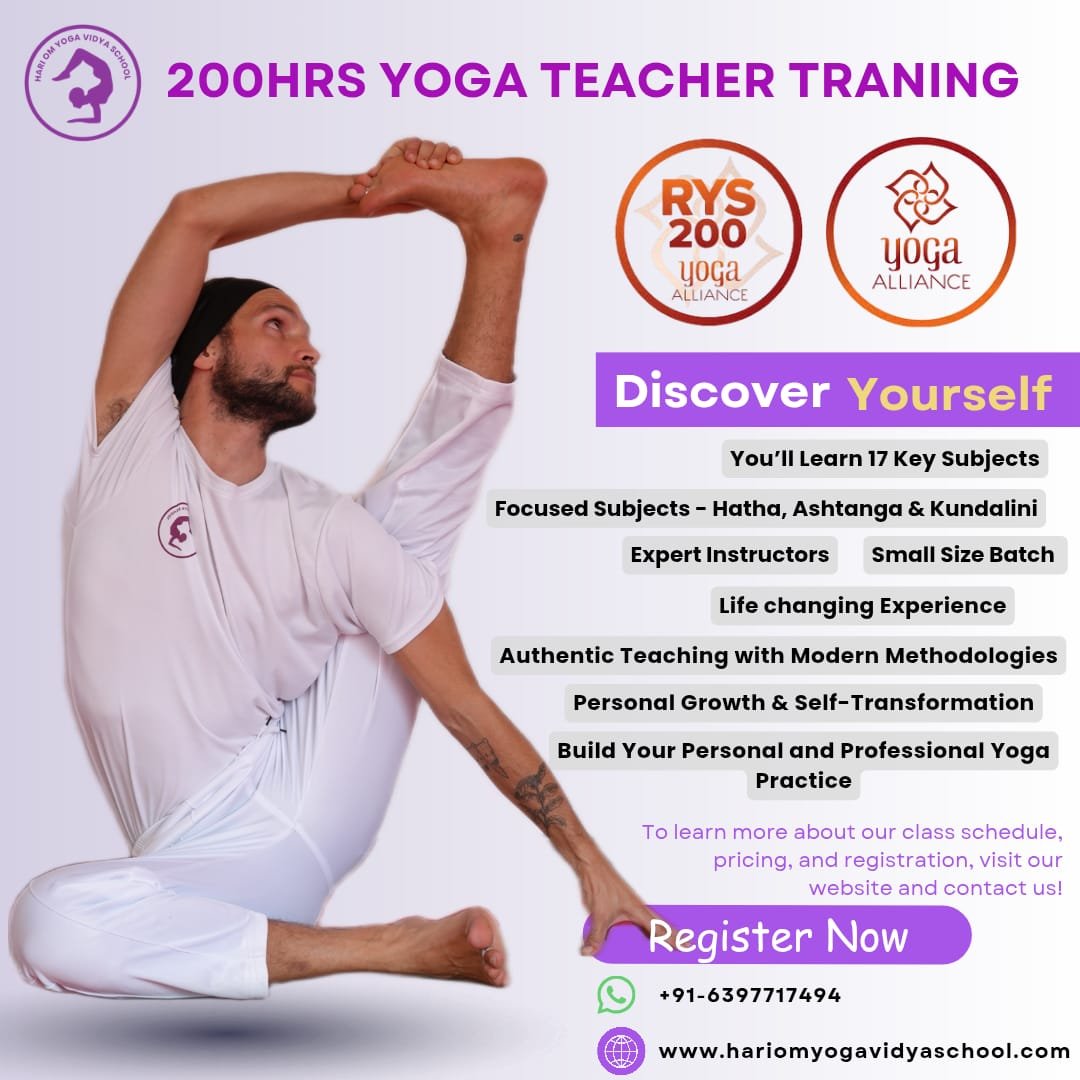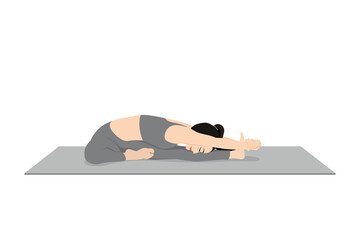Triyang Mukhaipada Paschimotanasana – One Leg Folded Forward Bend Pose
What is Triyang Mukhaipada Paschimotanasana?
The Triyang Mukhaipada Paschimotanasana is one of the seated poses, in the Ashtanga Primary series. The pose is a bit different from the other seated asanas, as it involves hip rotation. You can loosen up your hip muscles and hamstrings, while doing the pose. It also tends to release the tension from the back muscles. You can call it a variation of the basic Paschimotanasana. However, the only difference here is that, one of the legs are folded, beneath the hips, facing backward.

There are various names, that westerners might associate with this pose. They are the folded leg forward bend and three-limbed forward bend pose. This mainly target the spine, neck, shoulders, arms and legs. The name of the asana, has its roots in Sanskrit. Triyang means ‘three limbs’, Mukha means ‘face’, Ipada means ‘One foot’. Paschima translates to ‘back of the body’ and Uttana means ‘intense stretch’. The feet, knees, and buttocks are involved in the asana.
Read More: Why Is Kundalini Yoga Dangerous? The Truth About Its Risks and Rewards
How To Do The Triyang Mukhaipada Paschimotanasana?
- You can start the Triyang Mukhaipada Paschimotanasana, in Dandasana. It means, seated pose with the legs outstretched.
- Slowly fold the right leg and fold it at the knee, and then keep it beside the right hip joint. Slide the right calf muscles with your hands outwards. This brings the inner right calf muscles in contact with the inner thigh muscles.
- You have to ensure to keep both the knees together. Relax the shoulders a bit.
- While inhaling, raise your arms above your head.
- Exhale and bend the torso forward, on the left outstretched leg, and hold the left foot with both hands.
- Place your head and nose close to the knee. You have to hold the position for a minute to get the maximum benefits.
- While inhaling, lift the torso and bring down the arms.
- Exhale and bring both the hands on both sides of the body and rest the palms on the floor.
- You have to repeat the same on the other side as well.
After you are done on both sides, you can relax in Dandasana.
Modifications and Variations
- If you are doing this pose for the first time, you may have difficulty folding your body forward. You can try inserting a cushion or a folded blanket underneath the buttocks. Additionally, you can use the yoga block as well. It will also prevent tilting of the body.
- The usage of straps around the soles of the outstretched leg also helps. It helps people who are unable to reach the foot. You can hold the ends of the strap, rather than the foot.
- You can initially start with a chair as well. Keep the chair in front. Slide the leg beneath the chair. Keep your head and the hands on the chair. This will be les challenging for beginners as well.
Parsva Trianga Mukhaikapada Paschimotanasana is a variation of the asana. The bending is not towards the stretched leg, but on the sides. The shoulder touches the floor.
You have to keep your Drishti in Padayoragre, while you practice the asana. Moreover, you have to practice alternate exhalation and inhalation, with 5 exhalations in when bending forward.
Safety Precautions Decoded
You have to follow certain guidelines, to do this asana.
- If you suffer from any kind of pain in the back, hips, knees, ankles, shoulders, or your arms, Triyang Mukhaipada Paschimotanasana is best avoided.
- If you have had any sort of surgery in the above areas, then also you should avoid doing this asana.
- You should always follow the sequence of preparatory poses, before moving into this asana.
- It is quite natural to be unable to hook your wrists around the soles. You can keep the hands on the sides of the foot for balance and stability.
- Stop your body from being tilted towards the side, by shifting your body weight towards the bent leg.
Who Can Do This Asana and Who Cannot?
- If you are of normal constitution, without any injuries, you should do this asana, for its myriad benefits.
- Pregnant women should not do this asana. If at all, you are doing it, take help from an expert.
- If you suffer from a weak digestive system, you should not do the asana.
- If you have issues related to migraine, heart problems, or cardiac issues, you should use the strap or bolsters to do the pose.
Benefits of Trianga Mukhaikapada Paschimotanasana
- Triyang Mukhaipada Paschimotanasana will help in building your flexibility. It gives a deep stretch to the neck, shoulders, arms, back, thighs, and abdominal muscles. Thus, increasing blood circulation towards these organs.
- The Triyang Mukhaipada Paschimotanasana rejuvenates the internal organs of the abdomen. It tones the liver, stomach, pancreas and spleen, when you fold the torso on the thigh. It also prevents constipation in the process.
- Triyang Mukhaipada Paschimotanasana also rectifies the alignment of your feet. The disease is called flat-feet. You will gain balance and stability, from practicing this asana on a regular basis.
- You will notice a change in the reproductive system’s health as well. All the organs, that are located within the pelvic cavity, gain from the expansion and contraction of muscles during the forward bend. The reproductive organs get a deep massage.
- You will feel a calming effect on your nerves after doing this asana. It mainly relaxes the nervous system.
- The asana, also acts as a pain reliever. You are giving a deep stretch to the leg and hip joints, while doing the asana. It provides therapeutic relief.
- Your Manipura chakra also gets activated. It is none other than the solar plexus, which we are talking about. It is located just above the navel. When you fold the torso, this gets activated.
- Triyang Mukhaipada Paschimotanasana is an asymmetrical asana, so when you do this asana, the mind’s focus and concentration also increases. You will slowly become more balanced in all your yoga practices thereafter. This applies to your mental as well as physical balance.
Read More: Everything You Need to Know About Kundalini Yoga Teacher Training
The therapeutic benefits of the Triyang Mukhaipada Paschimotanasana are many. So, you should practice this asana on a regular basis.
Deepen Your Yoga Practice with Hari Om Yoga Vidya School
Located in the heart of Rishikesh, Hari Om Yoga Vidya School is a place where ancient yogic wisdom meets modern teaching techniques. As a top yoga school in Rishikesh, we are committed to providing authentic, immersive yoga education in a peaceful, spiritual setting. Recognized as one of the best yoga schools in Rishikesh, we offer structured training programs designed to help you evolve in your practice, whether you are a beginner or an experienced yogi.
If you’re searching for a yoga school in Rishikesh that focuses on holistic learning, experienced teachers, and a supportive community, look no further!
Explore Our Yoga Teacher Training & Retreats
At Hari Om Yoga Vidya School, we offer a range of courses tailored for different levels of practitioners:
✅ 100-Hour Yoga Teacher Training in Rishikesh – A foundational course for those looking to begin their yoga journey.
✅ 200-Hour Yoga Teacher Training in Rishikesh – An internationally recognized certification for aspiring yoga teachers.
✅ 300-Hour Yoga Teacher Training in Rishikesh – Advanced training to deepen your practice and refine your teaching skills.
✅ 7-Day Yoga Retreat in Rishikesh – A rejuvenating escape into yoga, meditation, and self-discovery.
✅ 10-Day Yoga Retreats in Rishikesh – A transformative experience that blends yoga, relaxation, and Himalayan serenity.
Join us for a life-changing experience and become part of our global yoga family! 🌿✨




